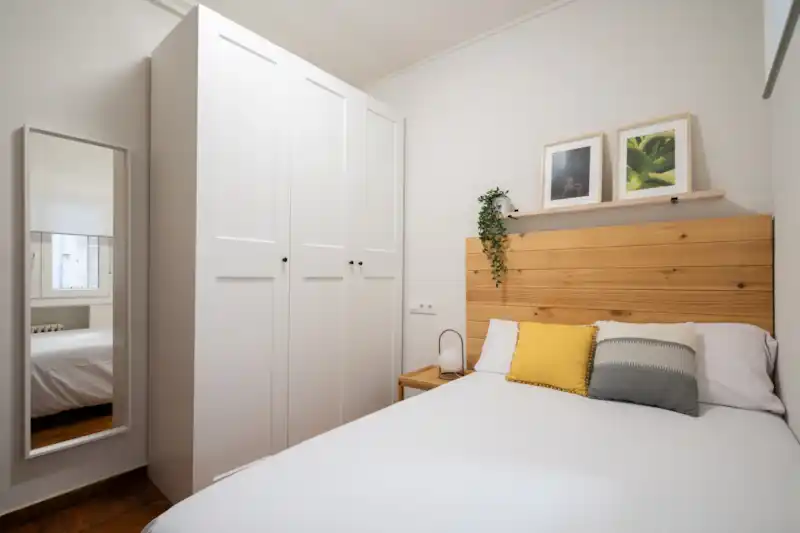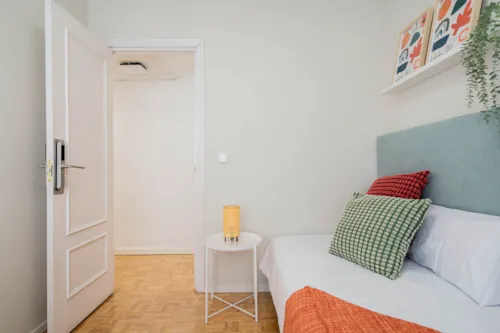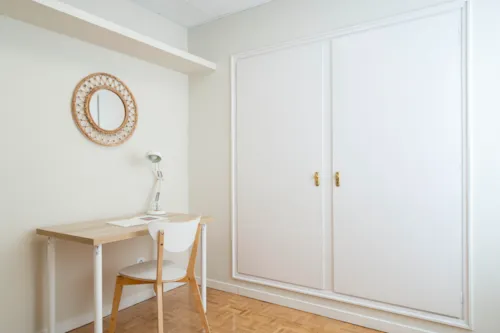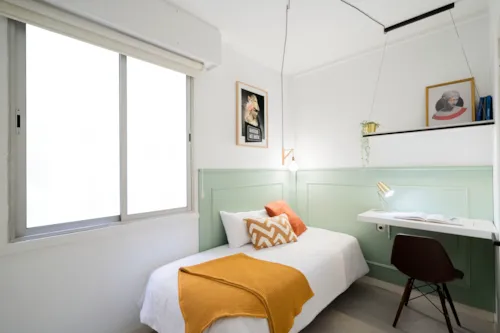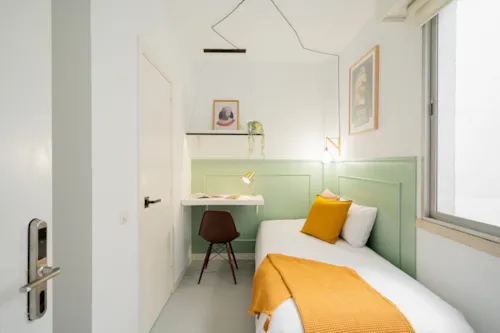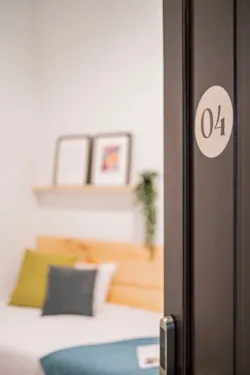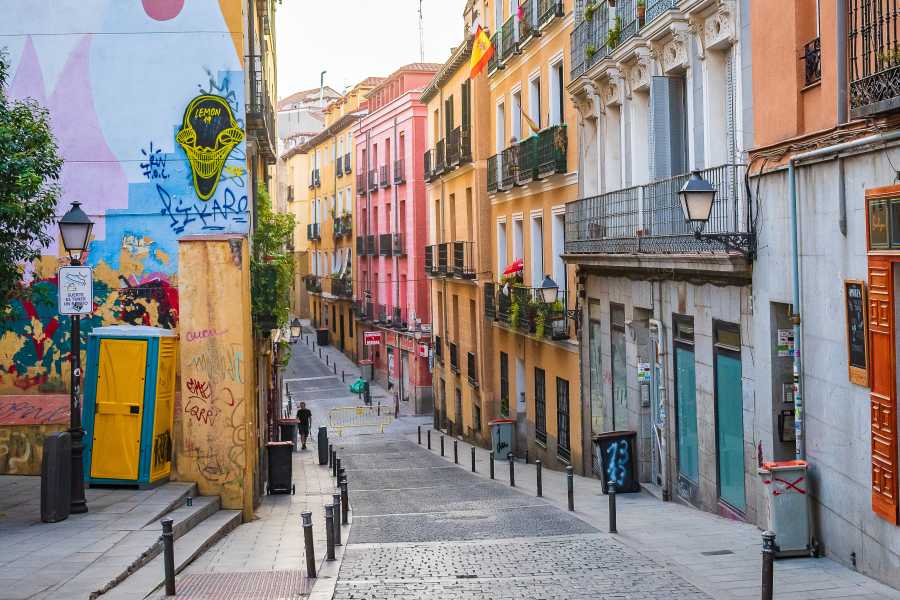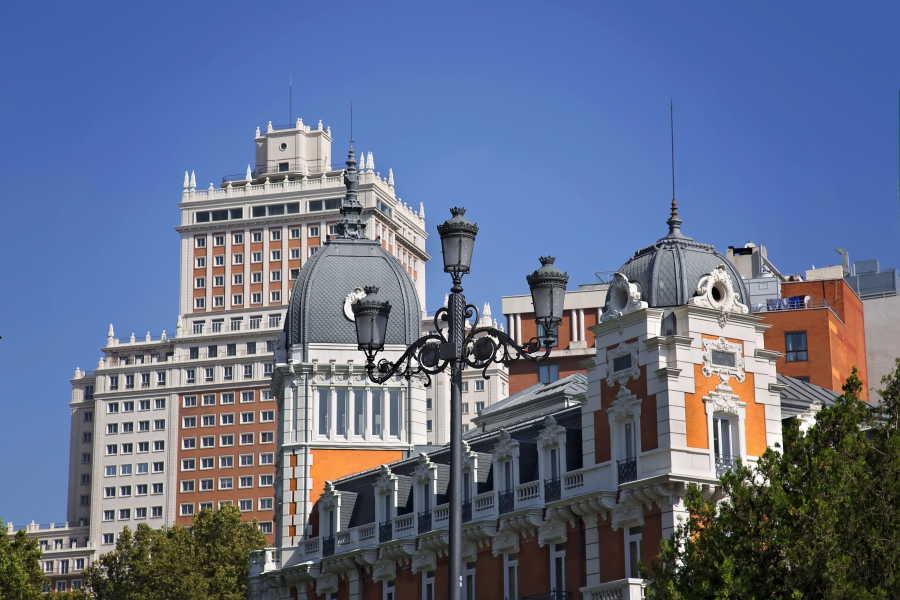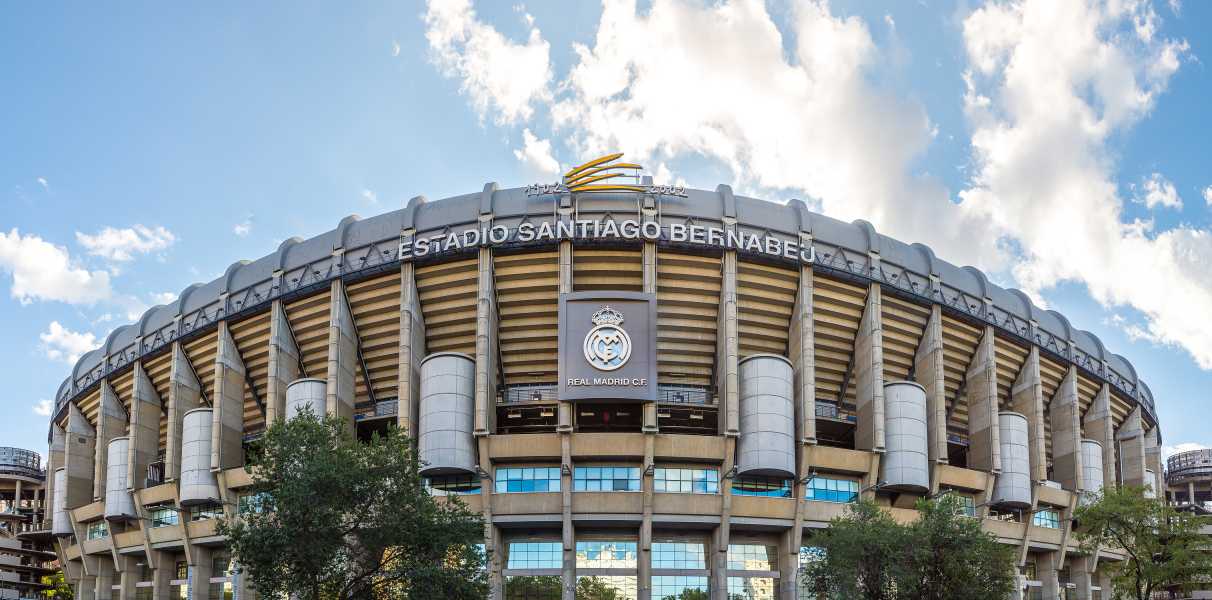
Paseo de la Castellana
The Paseo de la Castellana is one of Madrid's historic boulevards, starting at the Plaza de Colón and running all the way to the North Node, for a total of 6 km (4 mi). Together with Paseo del Prado and Paseo de Recoletos, it constitutes one of the main axes that cross the city from north to south.
A curiosity about its names, as it has changed as many as five. The long and impressive street was originally called Paseo de las Delicias de la Princesa, in honour of the recently born Isabel II. Then its name was changed to Avenida de la Libertad, then it changed again to Avenida da la Unión Proletaria, until it became Avenida del Generalísimo, the latter due to Franco's egocentrism and his victory. Finally, it was renamed Paseo de la Fuente Castellana for a fountain located at Plaza de Emilio Castelar, shortly to become simply La Castellana.
Walking along the entire Paseo de la Castellana can be an opportunity for a nice stroll, but if you need to get around in a hurry, as well as by car, you can take public transport. In fact, several surface means of transport pass through there that will allow you to reach various parts of the city. In addition, the street itself is easily accessible by train, bus and metro.

We have no availability in this neighborhood
What to see and do
A major urban redevelopment project aimed at improving the quality of life of the inhabitants has been undertaken throughout the area.
The Paseo de la Castellana today consists of six central and four lateral avenues and is also considered the financial heart of the city. In particular, it is the Azca complex, where the Picasso, Europa and BBVA towers, some of Madrid's main skyscrapers, rise skywards. Remaining with feet on the ground, during the week thousands of people pass through this area, including office workers, professionals, but also tourists and citizens. At the weekend, the area is also transformed into a place of nightlife entertainment.
Completing the financial core are the Cuatro Torres Business Area, four skyscrapers that form Madrid's business park and are the tallest buildings not only in the city but in the whole of Spain.
The Castellana is characterised by the presence of several important buildings standing on its sides, especially ministries and embassies. For instance, here are the headquarters of the Ministry of Public Works (Ministerio de Fomento) and the Ministry of Labour (Ministerio del Empleo).
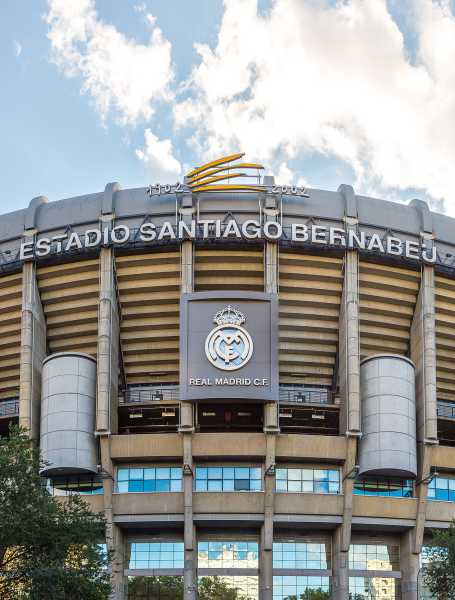
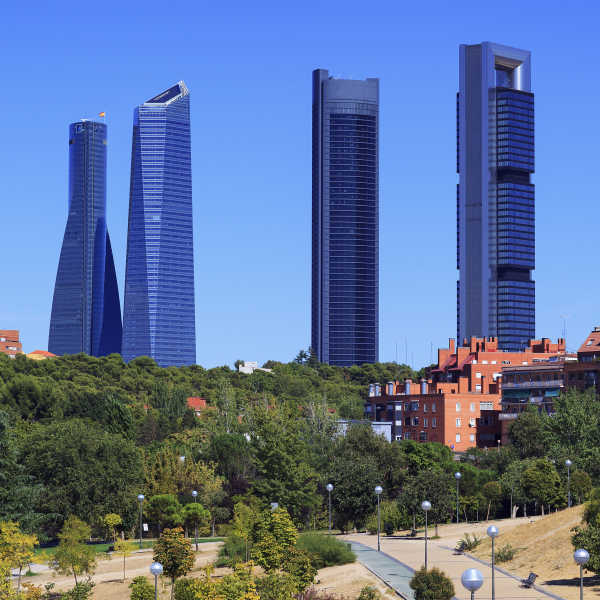
But there is also a rich variety of museums, palaces, shops, and international cultural houses. In its first part, the one closest to the centre, is the Museum of Public Art, an open-air sculpture museum. It houses a collection of Spanish abstract art with works by Joan Miró, Pablo Serrano and Eduardo Chillida and others.
Near Plaza San Juan de la Cruz, where a beautiful fountain can also be admired in the centre, is the National Museum of Natural Sciences. This 20th century building houses fossils and skeletons of whales and dinosaurs.
One of the symbols of the Paseo de la Castellana is the Santiago Bernabéu Stadium, the stadium of Real Madrid. Here you can not only watch football matches but also take guided tours of the facility and the trophy room.
Another of the most important sights in La Castellana is the Puerta de Europa, one of the historical entry and exit points of the city. Here are the famous leaning buildings, now known as the Kio Towers, designed by Americans Philip Johnson and John Burgee. They are inclined 14.3° from the vertical and have become modern symbols of the Spanish capital.
Where to eat and drink
Being an area so rich in offices, places of interest and shopping, it offers a huge choice of restaurants and places to eat and drink, as well as different styles of cuisine.
Let's review, in the meantime, some of the Spanish or Mediterranean taverns along Paseo de la Castellana: Restaurante Flores de Alcachofa, where you can eat excellent dishes with meat, fish and, of course, artichokes given the name, in a cosy location with a covered terrace. Sagardi Castellana, a traditional Basque restaurant where you can find classic pinchos and grilled meats in a refined restaurant. La Gaditana Castellana, an Andalusian bar-restaurant offering excellent fried fish and recipes of typical Andalusian dishes.
Restaurants around the stadium include: Taberna del Volapié, Restaurante Perico, a tapas restaurant as well as international cuisine, La Divina de Castellana, a sophisticated restaurant offering traditional cuisine. Or Yakitoro Castellana, a Japanese-inspired restaurant serving revisited yakitori, i.e., chicken skewers and more. A little further up the street is Tasquita Los Ochoa, reminiscent of traditional Madrid bars but with reinvented gastronomy for those who want to try original combinations of classic tapas and new flavours.
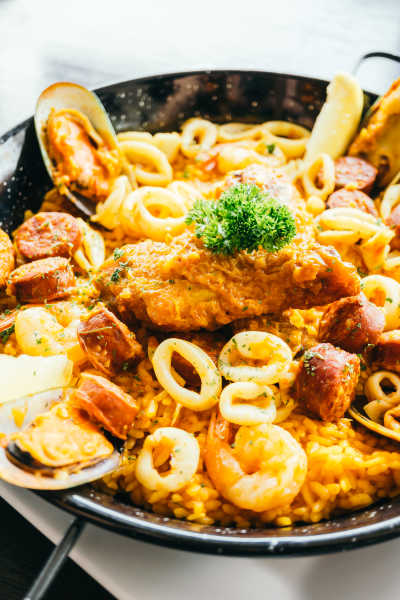
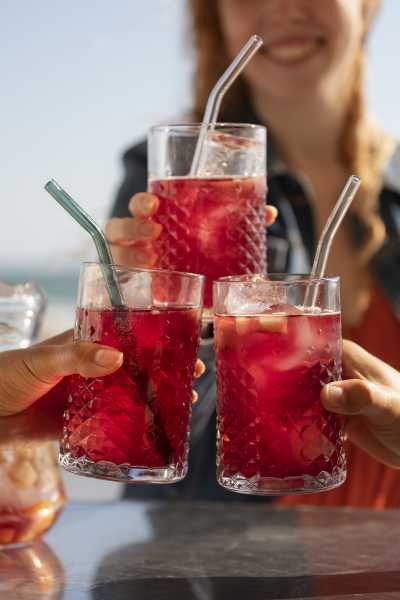
If you're in the mood for the more classic but always excellent paella, here are some restaurants in and around La Castellana: Paellitas Tradición, in Corso de San German, Restaurante El Balandro, near Plaza de Cuzco, Casa Narcisa, home-made Spanish dishes.
When it's time for an aperitif, there are several places you can go: Castellana 8, here the speciality is cocktails, Castellana 113 Lounge&Bar, a quiet place where you can find everything from cocktails to beer and a wide selection of liquors. La Gintonería de Candilón, where you can find a wide variety of gin, Lolita Lounge & Bar, a place that also offers live music and a piano bar.
In the Azca complex, in the evenings and at weekends you can find entertainment and nice events especially on Avenida de Brasil, in places like Moby Dick and The Irish Rover, this an Irish pub where they also broadcast sporting events.

Where to go shopping
As the financial and commercial centre of the city, the Paseo de la Castellana offers all kinds of shopping opportunities.
There are clothing, shoe, accessory and jewellery boutiques and shops, independent businesses, and shopping centres. Luxury brands can be found, including Louis Vuitton, Dior, Gucci, Bvlgari or Michael Kors, but also more popular chain shops such as Zara, Mango, Promod, Intimissimi, H&M, Calzedonia and so on. Particularly in the Azca area, which lies to the north of both the street and the city, around the buildings and offices, there are several commercial activities and useful services, including those related to electronics, technology and telephony.
Among the shopping centres are: Centro Comercial Las Tiendas de la Paz, located at Paseo de la Castellana 261, open from 10 a.m. to 8.30 p.m. Monday to Saturday, but closed on Sundays. Or the Centro Comercial Moda Shopping, open all day every day, located on Avenida del General Perón, a few steps from the Santiago Bernabéu metro stop.
Every part of the street is also well stocked with supermarkets and grocery stores for everything from fresh produce to delicatessens.
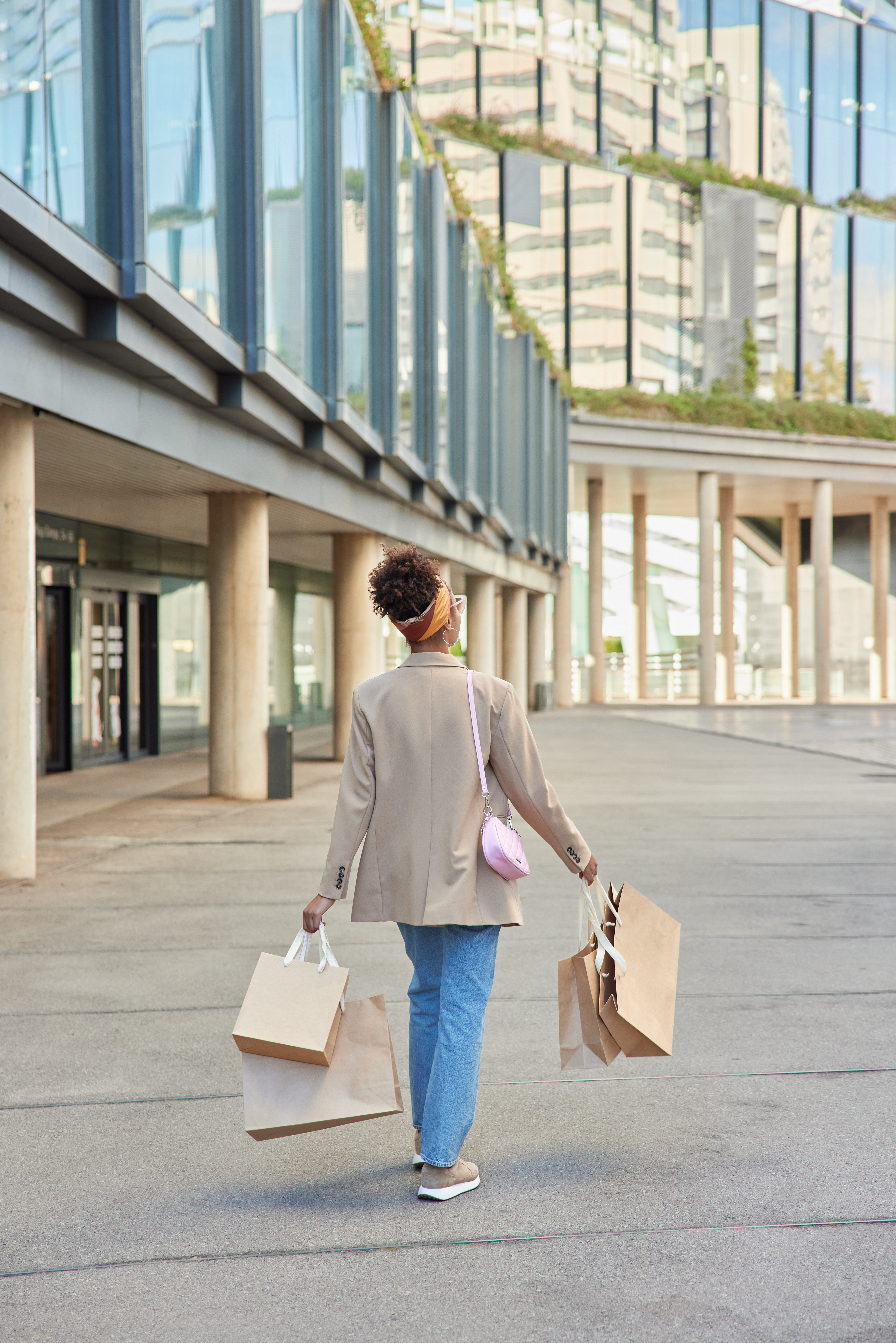
Some questions?
Have more questions?
